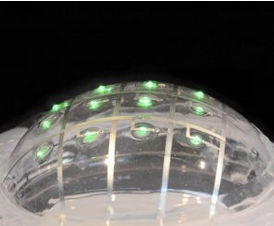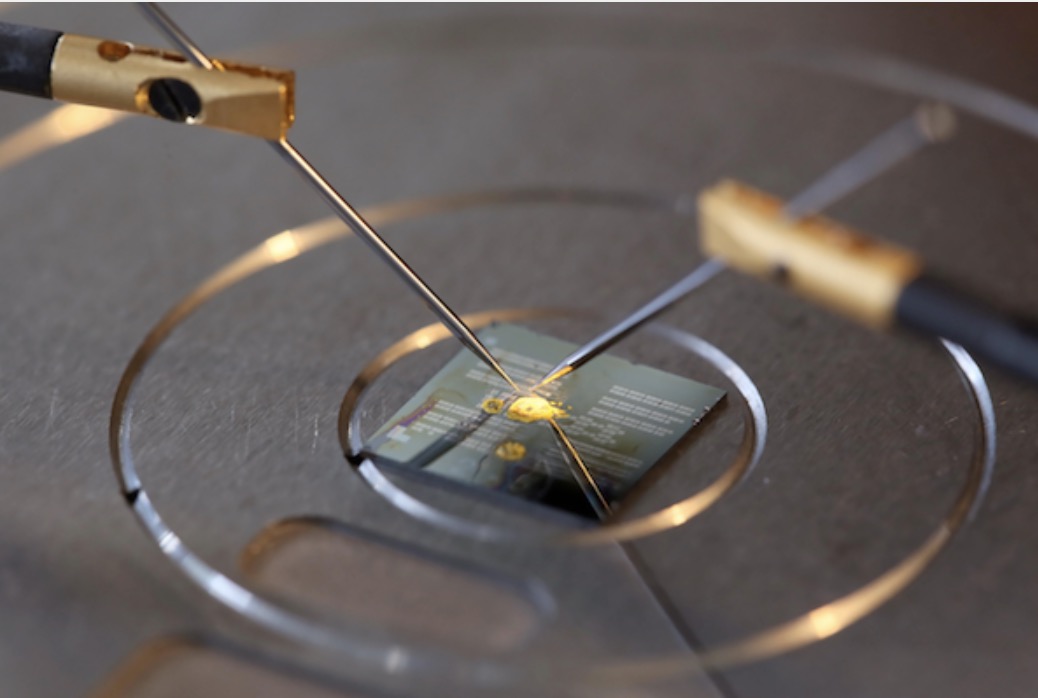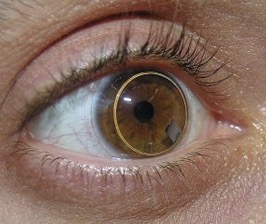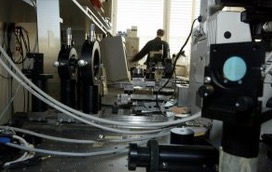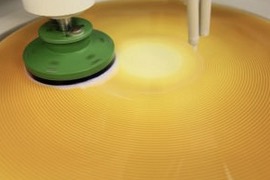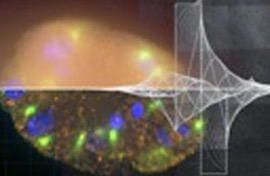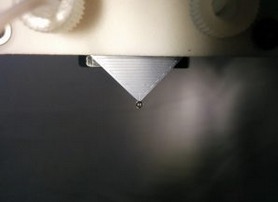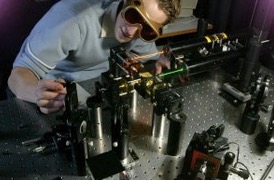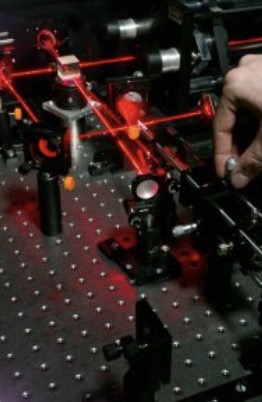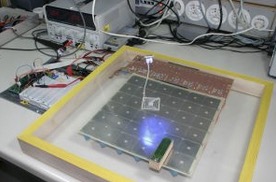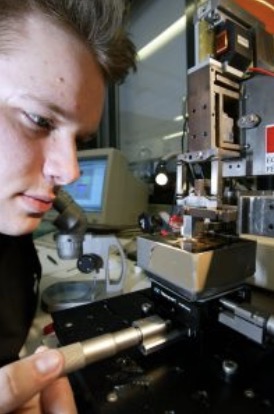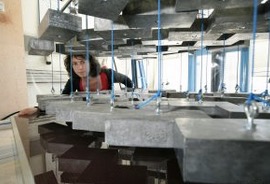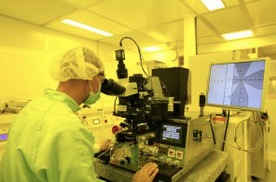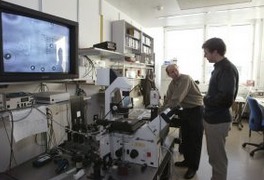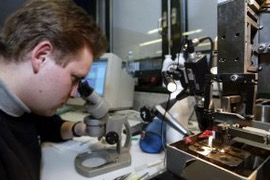Wave engineering, Optics & Photonics
Waves, be they of electromagnetic (such as light), or mechanical nature (such as sound) are at the core of modern technologies, due to their ability to transmit power and information. Their applications range from information processing, sensing, imaging, telecommunications, to energy transfer and management. In particular, the study and manipulation of electromagnetic waves is trans-disciplinary and is present in all faculties at EPFL.
Photonics, or “light science,” goes hand in hand with many new technologies and materials. It underlies any technique for emitting, detecting, modulating, transmitting, amplifying and converting materials and optical signals. It helps scientists to perform imaging with optimized resolution, make devices such that photons can interrogate and sense molecules, living and mechanical systems, with unprecedented sensitivity, sense physical quantities in a non-contact and non-destructive manner, build systems to compute with low power and faster speed, build high performance integrated lasers using photonics chips and optical fibers, process materials to either produce 3D structures by addition of material or fine micro-nano structures by removing material, build high-performance solar cells and develop tomorrow’s telecommunications.
Activities in this domain cover the entire electromagnetic spectrum, including radio and mm-waves, for example to develop structured materials, devices and surfaces to emit, manipulate, or detect the microwave signals used in the new generations of communication systems, as well as guarantee electromagnetic compatibility and protection against lightning.
In addition to the extremely broad range of domains and applications, photonics at IEM is particularly aiming at advancing the development of compact and robust systems leveraging the microfabrication capabilities and the development of new materials for either integrated systems or optical fibers.
Key research themes
- Nanoscale Optics, Plasmonics, Metamaterials: modelling, nanofabrication and optical characterization of metallic/dielectric nano structures and aggregates thereof to address novel biosensing techniques, nonlinear plasmonics, optical metamaterials, as well as the fundamental properties of plasmonic nanostructures.
- Integrated Photonics: simulation, design, fabrication of hybrid nanoscale quantum devices composed of superconducting resonators, nano- and micro-mechanical resonators, integrated nonlinear photonic chips in various materials such as Lithium Niobate, Silicon Nitride, Silicon.
- Detectors and Image sensors: single photon avalanche devices (SPAD) and design optimization techniques for high-speed 2D/3D optical sensing, embedded & reconfigurable processing architectures.
- Quantum optical systems: light generation and detection for secure quantum communication, quantum imaging, and distributed quantum computing applications.
- Imaging systems: computational imaging, algorithms, simulation, experiments on digital wavefront shaping for imaging in challenging lossy, noisy, or scattering environments, optical tomographic reconstruction, contact-less quality inspection using optomechanical effects.
- Nano-semi-conductors-2D materials: two-dimensional materials such as monolayers of metal dichalcogenides. New processes, synthesis for the preparation of thin-film silicon, microcrystalline silicon, and semiconductor nanostructures for quantum science and renewable energy harvesting. Integration of these materials into devices with advanced functionalities.
- Fiber systems: sense physical quantities in a non-contact and distributed manner, infrared fiber lasers, imaging and controlled light delivery with single mode and multimodes fibers to obtain non-contact information remotely.
- Laser processing systems: structuring materials in 2D / 3D with polymers, ceramics, glass by lasers by means of transforming, subtracting and adding material to create functional systems.
- Electromagnetic Compatibility (EMC): computational electromagnetics, transients in power systems, EMC in space and transportation systems.
- Lightning: lightning physics, modeling, characterization, detection and location, protection.
- Time Reversal: theory of time reversal, application to source location.
- Antennas and Propagation in Biological tissues: Study of wireless links with body implants
- Acoustic and Electromagnetic metamaterials and metasurfaces: Structuring materials and surfaces to achieve specific properties, manipulate waves at subwavelength scales, and enhance wave-matter interactions.

